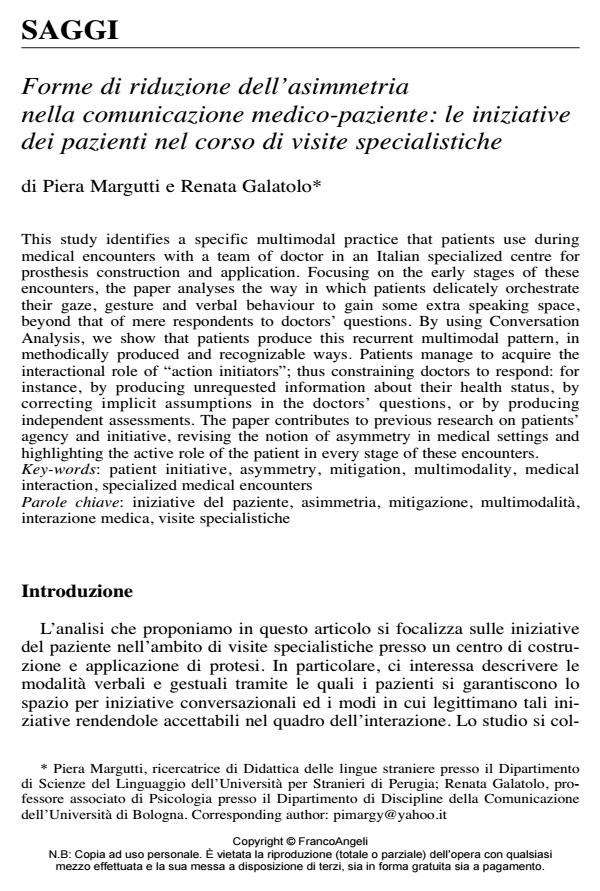Forme di riduzione dell’asimmetria nella comunicazione medico-paziente: le iniziative dei pazienti nel corso di visite specialistiche
Journal title SALUTE E SOCIETÀ
Author/s Piera Margutti, Renata Galatolo
Publishing Year 2013 Issue 2013/1
Language Italian Pages 14 P. 19-32 File size 117 KB
DOI 10.3280/SES2013-001003
DOI is like a bar code for intellectual property: to have more infomation
click here
Below, you can see the article first page
If you want to buy this article in PDF format, you can do it, following the instructions to buy download credits

FrancoAngeli is member of Publishers International Linking Association, Inc (PILA), a not-for-profit association which run the CrossRef service enabling links to and from online scholarly content.
This study identifies a specific multimodal practice that patients use during medical encounters with a team of doctor in an Italian specialized centre for prosthesis construction and application. Focusing on the early stages of these encounters, the paper analyses the way in which patients delicately orchestrate their gaze, gesture and verbal behaviour to gain some extra speaking space, beyond that of mere respondents to doctors’ questions. By using Conversation Analysis, we show that patients produce this recurrent multimodal pattern, in methodically produced and recognizable ways. Patients manage to acquire the interactional role of "action initiators"; thus constraining doctors to respond: for instance, by producing unrequested information about their health status, by correcting implicit assumptions in the doctors’ questions, or by producing independent assessments. The paper contributes to previous research on patients’ agency and initiative, revising the notion of asymmetry in medical settings and highlighting the active role of the patient in every stage of these encounters.
Keywords: Patient initiative, asymmetry, mitigation, multimodality, medical interaction, specialized medical encounters
Piera Margutti, Renata Galatolo, Forme di riduzione dell’asimmetria nella comunicazione medico-paziente: le iniziative dei pazienti nel corso di visite specialistiche in "SALUTE E SOCIETÀ" 1/2013, pp 19-32, DOI: 10.3280/SES2013-001003